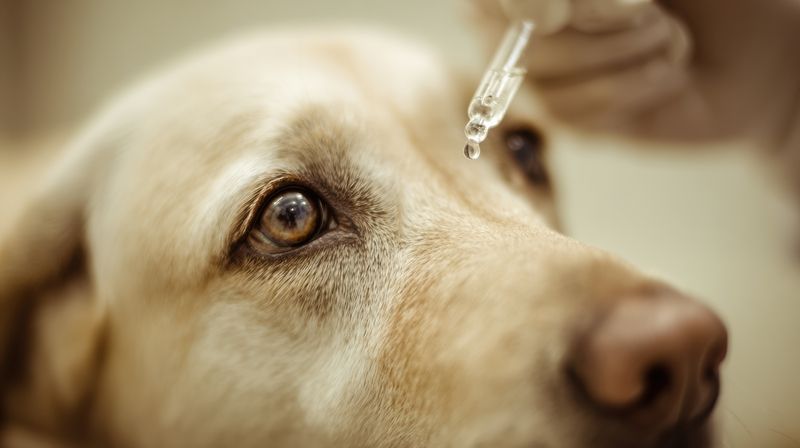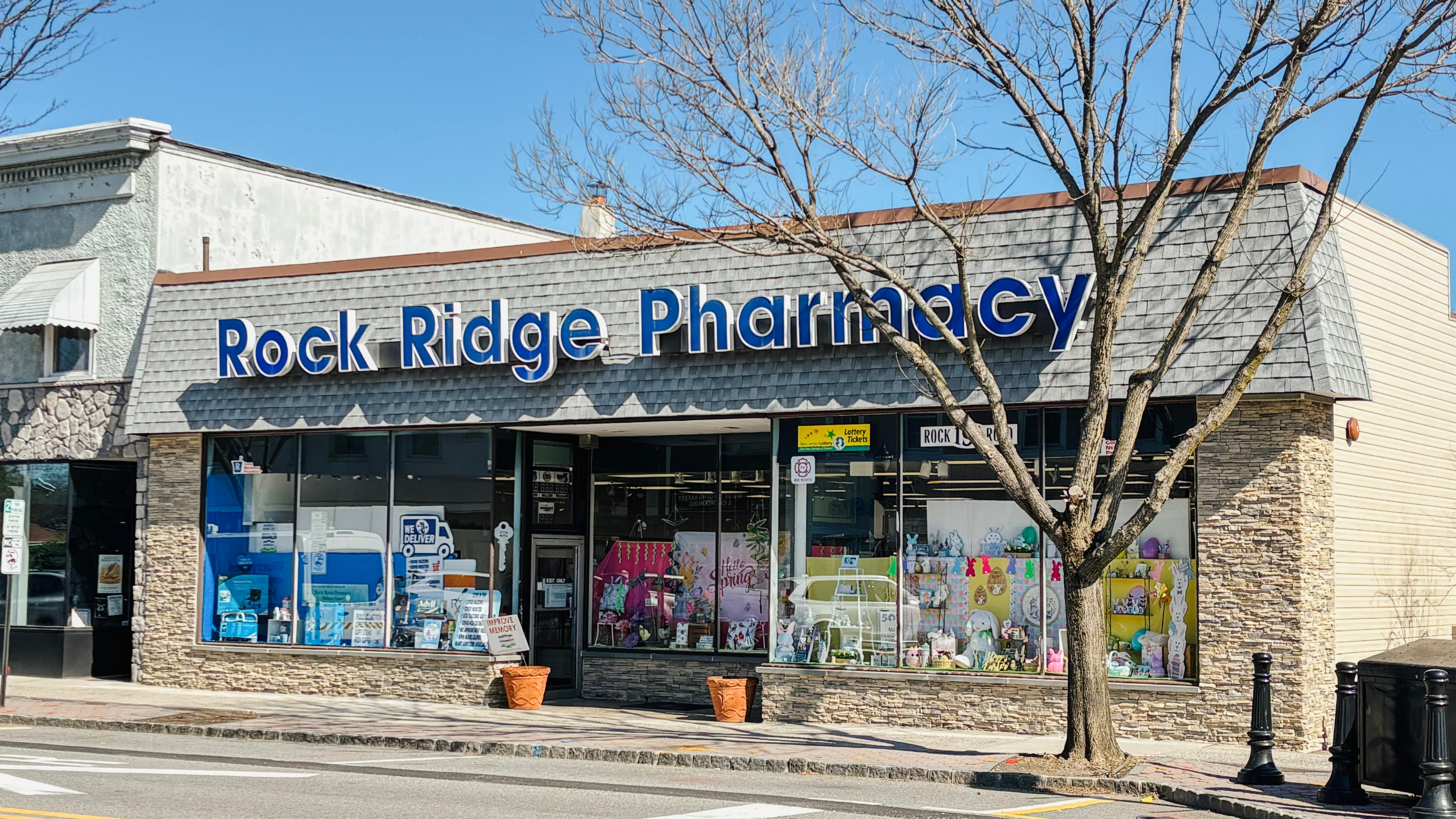Veterinary Ophthalmic Care • Prescription Required
Compounded Cyclosporine & Tacrolimus Eye Drops for Pets
Custom-compounded immunosuppressive ophthalmic solutions for pets with dry eye (KCS), pannus, chronic inflammation, and other immune-mediated eye conditions.
Veterinarian-prescribed • Pharmacist-guided • Pet-approved
What Are Cyclosporine & Tacrolimus?
Cyclosporine is an immunosuppressive medication that stimulates natural tear production and reduces eye inflammation. It is the gold standard treatment for keratoconjunctivitis sicca (KCS) and other immune-mediated eye conditions in dogs and cats.
Tacrolimus is a more potent immunosuppressant, often prescribed when cyclosporine isn’t effective enough. It penetrates the cornea better and can work at much lower concentrations— often 10–100x more potent than cyclosporine.
Combination Therapy may be used in severe or complex cases, providing synergistic benefits by combining both medications for enhanced immunosuppressive action and superior outcomes.

Why Use Compounded Cyclosporine & Tacrolimus?
While commercial products like Optimmune® exist, compounded immunosuppressants offer tailored, pet-friendly solutions for chronic eye conditions.
Custom Concentrations
Formulated at specific strengths (0.1%–2%) based on your pet’s unique response and condition severity.
Multiple Base Options
Available in aqueous, corn oil, or MCT oil bases for improved tolerance and absorption.
Preservative-Free
Gentle, preservative-free formulations designed for long-term use without irritation.
Combination Formulas
Custom blends of Cyclosporine + Tacrolimus not available commercially for severe or complex cases.
Pharmacist Expertise
Veterinary compounding ensures potency, stability, and safety, guided by pharmacist expertise.
How Cyclosporine & Tacrolimus Work
These advanced immunosuppressants target the immune system to restore tear production, reduce inflammation, and protect delicate eye tissues in pets with chronic eye disease.
Cyclosporine Action
Targets T-lymphocytes to reduce immune-mediated inflammation and stimulate natural tear production.
Tacrolimus Advantage
More potent with superior tissue penetration, longer duration, and effective at lower concentrations.
Corneal Protection
Both medications reduce inflammatory damage, supporting healing of corneal and conjunctival tissues.
Combination Therapy
Provides synergistic immunosuppression for severe cases, allowing lower doses of each drug with enhanced efficacy.
| Medication | Strength | Form | Base | Primary Use |
|---|---|---|---|---|
| Cyclosporine/Tacrolimus | 2% / 0.02% | Eye Drops (15ml) | Corn Oil | Complex dry eye cases |
| Cyclosporine/Tacrolimus | 2% / 0.03% | Eye Drops (15ml) | Corn Oil | Treatment-resistant conditions |
Understanding Base Options & Costs
Choosing the right formulation impacts comfort, dosing, and overall cost
Aqueous (Water-Based)
Fast-absorbing and lightweight.
Ideal for initial therapy or sensitive pets.
May require 2–3 daily applications.
Most economical option.
Corn Oil
Thicker consistency allows longer eye contact.
Excellent for severe dry eye.
Often enables twice-daily dosing.
Moderate price increase due to specialized prep.
MCT Oil
Balanced absorption and comfort.
Well-tolerated by most pets.
Good middle ground between aqueous and corn oil.
Premium pricing due to specialized processing.
Emulsion
Combines benefits of oil and water.
Provides better corneal penetration for tacrolimus.
Ensures even distribution across eye surface.
Highest cost due to complex formulation.
How to Give the Drops
Step-by-step guide for safe application
Dosage Guidelines & Cost Considerations
Cyclosporine
Initial: 1 drop in affected eye(s) 2–3 times daily.
Maintenance: Often reduced to 1–2 times daily.
Monthly cost varies by strength & frequency.
Tacrolimus
Initial: 1 drop in affected eye(s) 1–2 times daily.
Maintenance: May be reduced to once daily due to longer action.
Monthly cost varies by strength & frequency.
Combination Therapy
Typical: 1 drop in affected eye(s) 1–2 times daily.
Often more cost-effective than separate medications.
Call Rock Ridge Pharmacy for pricing.
Treatment Duration
Improvement phase: 4–6 weeks minimum of consistent use.
Long-term: Most pets require lifelong treatment.
If You Miss a Dose
Give when remembered unless close to the next scheduled dose.
Resume normal timing — do not double dose.
Consistency Matters
Maintaining the prescribed routine is essential to control symptoms and prevent relapse.
Storage & Safety Information
Proper handling and monitoring of cyclosporine or tacrolimus ophthalmic drops ensures safety and effectiveness.
Storage & Handling
- Refrigerate: 36–46°F (2–8°C).
- Protect from light and heat.
- Do not freeze; shake gently if suspension.
- Replace cap tightly; check expiration date.
Safety & Side Effects
Common mild effects: brief stinging, tearing, or redness; mild discharge during first weeks.
Contact your vet if: redness/swelling persists, cloudiness develops, or discharge turns yellow/green.
Treatment Timeline & Cost Planning
Week 1–2
Initial reduction in redness and irritation.
Cost: Full dose frequency, highest monthly expense.
Week 4–6
Noticeable improvement in tear production and comfort.
Cost: Continued full dosing, potential for slight reduction.
Week 8–12
Maximum therapeutic benefit achieved.
Cost: Often reduced to maintenance dosing, lower monthly cost.
Long-term
Ongoing treatment needed to maintain benefits.
Cost: Maintenance dosing typically 30–50% less than initial treatment.
Veterinary Monitoring
Check-ups every 3–6 months recommended.
Additional cost: Per veterinary visit.

Why Choose Rock Ridge Pharmacy for Veterinary Eye Drops?
- PCAB-accredited & USP <797> sterile lab ensuring safety and quality.
- Veterinary compounding expertise trusted since 1950.
- Custom dosing & formulations for different species and conditions.
- Fast turnaround — most prescriptions ready in 1–2 business days.
- Pharmacist support for storage, use, and follow-up care.
Rock Ridge Pharmacy works with veterinarians and pet owners to provide safe, sterile, and personalized ophthalmic solutions backed by decades of trusted care.
FAQS About Cyclosporine and Tacrolimus Eye Drops at Rock Ridge Pharmacy
Do I need a prescription?
Yes. Both cyclosporine and tacrolimus are only available with a veterinarian's prescription after proper diagnosis of your pet's eye condition.
How much will this cost per month?
Monthly costs range from $45–155 depending on medication choice, strength, and dosing frequency. Combination therapy is often more cost-effective than separate medications.
Does pet insurance cover compounded medications?
Many pet insurance plans cover prescription medications when medically necessary. Keep receipts for potential reimbursement.
Which medication is better – cyclosporine or tacrolimus?
Your veterinarian will choose based on your pet's specific condition, severity, and response history. Cyclosporine is often tried first, with tacrolimus reserved for refractory cases.
How long before I see improvement?
Most pets show initial improvement within 2–4 weeks, with maximum benefit by 6–8 weeks. Tacrolimus may work faster in some cases due to superior penetration.
Is this safe for long-term use?
Yes. Both medications have excellent long-term safety profiles when monitored by a veterinarian. Many pets use them for years without problems.
What if my pet doesn't improve after 6–8 weeks?
Our pharmacist will work with your veterinarian to adjust concentration, change medications, modify the base vehicle, or consider combination therapy.
Can these be used together with other eye medications?
Yes, but timing is important. Wait 5–10 minutes between different eye drops. Our pharmacist can provide specific guidance for your pet's medication schedule.
Is preservative-free available?
Yes. We offer preservative-free formulations, which are often preferred for long-term use. This may add $10–15 to the base cost.
What's the advantage of combination therapy?
Combination formulas provide enhanced effectiveness for complex cases, simplified dosing, and may be more cost-effective than using separate medications.
Can I stop the medication once my pet's eyes look better?
No. Most pets with immune-mediated eye conditions require lifelong treatment. Stopping typically results in return of symptoms within days to weeks.
What if I accidentally get it in my eye?
Rinse thoroughly with clean water. While generally safe, these are potent immunosuppressants – contact your physician if irritation persists.
How should I travel with these medications?
Store in a cooler with ice packs to maintain refrigeration. Essential for maintaining medication stability and effectiveness.
What if the medication accidentally freezes?
Do not use frozen medication as it may affect stability and effectiveness. Contact us for replacement – we offer a one-time replacement guarantee.
Are there generic alternatives to reduce cost?
Our compounded medications are already cost-effective alternatives to brand-name products. We can discuss concentration adjustments to optimize both effectiveness and cost.
What payment options do you accept?
We accept cash, credit cards, CareCredit, and can work with pet insurance for direct billing. Payment plans available for long-term treatments.
How do I know which base vehicle is right for my pet?
Your veterinarian and our pharmacist will recommend the best base based on your pet's condition severity, tolerance, and lifestyle factors.
Can multiple pets share the same bottle?
While possible, separate bottles are recommended to prevent cross-contamination and ensure accurate dosing for each pet's specific needs.
What if my pet has an adverse reaction?
Contact your veterinarian immediately. Our pharmacist can help adjust the formulation or recommend alternative approaches.
